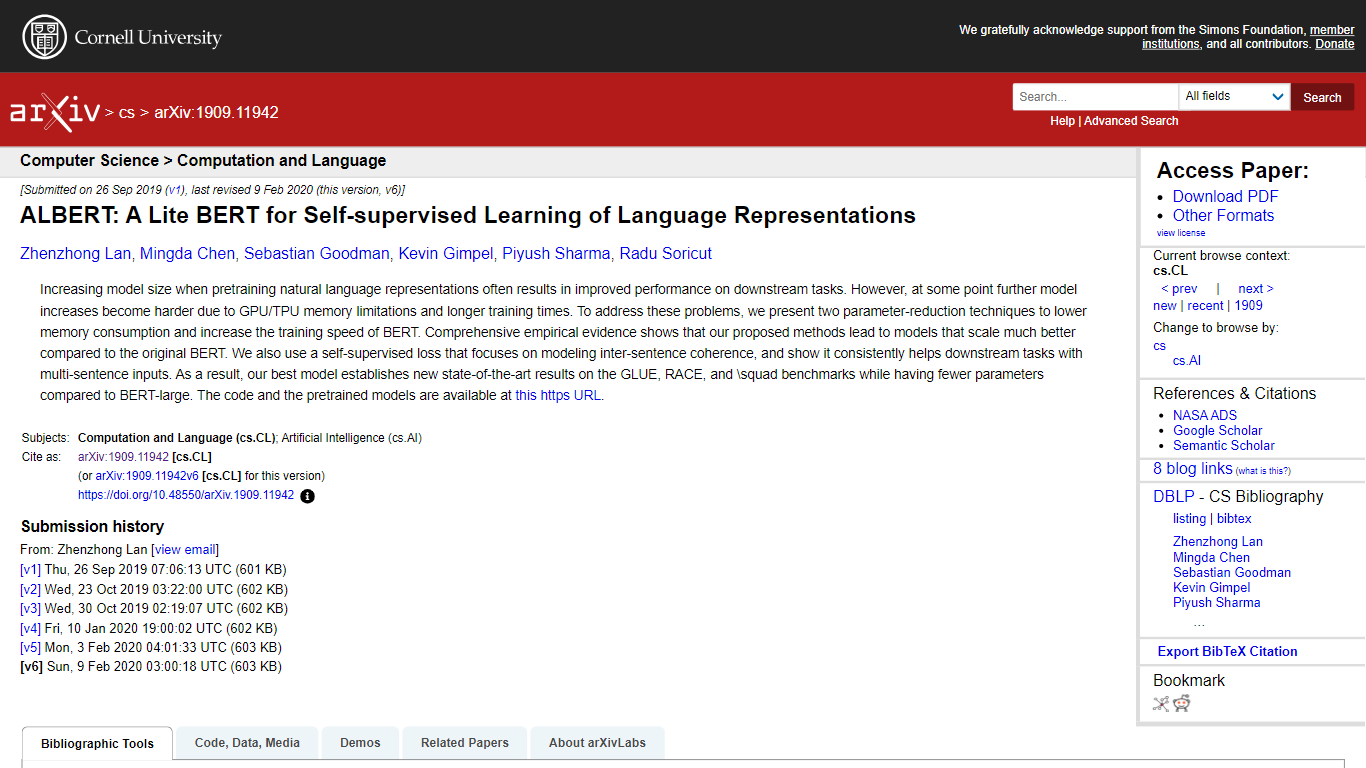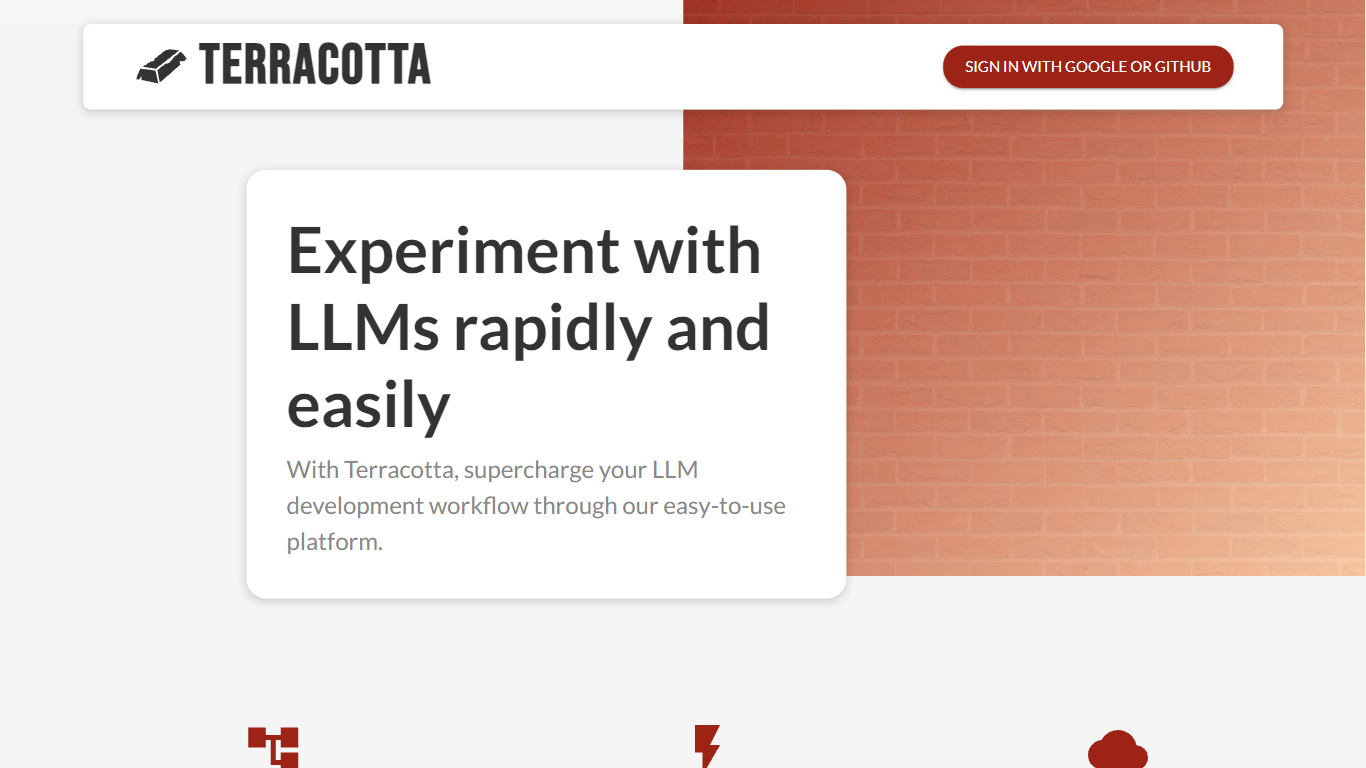ALBERT vs Terracotta
In the clash of ALBERT vs Terracotta, which AI Large Language Model (LLM) tool emerges victorious? We assess reviews, pricing, alternatives, features, upvotes, and more.
When we put ALBERT and Terracotta head to head, which one emerges as the victor?
Let's take a closer look at ALBERT and Terracotta, both of which are AI-driven large language model (llm) tools, and see what sets them apart. Interestingly, both tools have managed to secure the same number of upvotes. Be a part of the decision-making process. Your vote could determine the winner.
Feeling rebellious? Cast your vote and shake things up!
ALBERT

What is ALBERT?
ALBERT, short for "A Lite BERT," is an optimized version of the widely-used BERT model for natural language processing tasks. Presented in the arXiv paper by Zhenzhong Lan and colleagues, ALBERT offers two parameter-reduction techniques that significantly decrease memory consumption and increase the training speed of BERT without sacrificing performance.
This advancement addresses the challenge of GPU/TPU memory limitations and the typically lengthy training times associated with increasing model sizes. The paper demonstrates through empirical evidence that ALBERT not only performs better than BERT on a variety of benchmarks, like GLUE, RACE, and SQuAD, but it also achieves state-of-the-art results with a smaller parameter count. The research further introduces a self-supervised loss function that enhances the model’s ability to understand inter-sentence coherence, leading to a substantial improvement on tasks requiring multi-sentence inputs. The authors provide the code and pretrained models for ALBERT, making them accessible for widespread use in the NLP community.
Terracotta

What is Terracotta?
Terracotta is a cutting-edge platform designed to enhance the workflow for developers and researchers working with large language models (LLMs). This intuitive and user-friendly platform allows you to manage, iterate, and evaluate your fine-tuned models with ease. With Terracotta, you can securely upload data, fine-tune models for various tasks like classification and text generation, and create comprehensive evaluations to compare model performance using both qualitative and quantitative metrics. Our tool supports connections to major providers like OpenAI and Cohere, ensuring you have access to a broad range of LLM capabilities. Terracotta is the creation of Beri Kohen and Lucas Pauker, AI enthusiasts and Stanford graduates, who are dedicated to advancing LLM development. Join our email list to stay informed on the latest updates and features that Terracotta has to offer.
ALBERT Upvotes
Terracotta Upvotes
ALBERT Top Features
Parameter-Reduction Techniques: Techniques that lower memory consumption and boost BERT's training speed.
Improved Model Scaling: ALBERT scales better than the original BERT, even with fewer parameters.
State-of-the-Art Performance: Achievements include new high scores on GLUE, RACE, and SQuAD benchmarks.
Self-Supervised Loss Function: A novel loss function that improves modeling of inter-sentence coherence.
Open Source Models: The pretrained models and codebase are publicly available for community use.
Terracotta Top Features
Manage Many Models: Centrally handle all your fine-tuned models in one convenient place.
Iterate Quickly: Streamline the process of model improvement with fast qualitative and quantitative evaluations.
Multiple Providers: Seamlessly integrate with services from OpenAI and Cohere to supercharge your development process.
Upload Your Data: Upload and securely store your datasets for the fine-tuning of models.
Create Evaluations: Conduct in-depth comparative assessments of model performances leveraging metrics like accuracy BLEU and confusion matrices.
ALBERT Category
- Large Language Model (LLM)
Terracotta Category
- Large Language Model (LLM)
ALBERT Pricing Type
- Freemium
Terracotta Pricing Type
- Freemium
